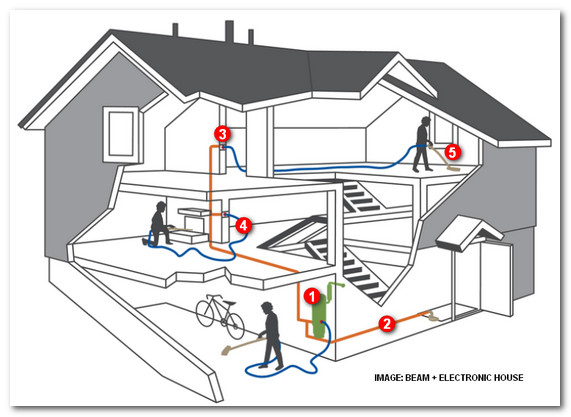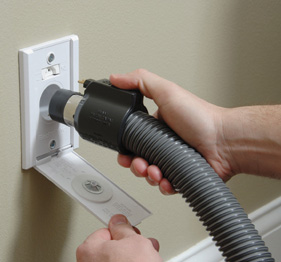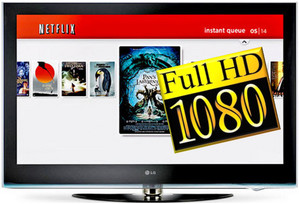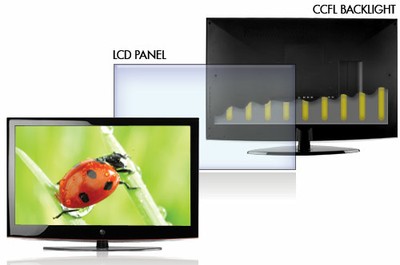
Anatomy of a Central Vacuum System: 5 Easy Pieces
What goes into a central vacuum system? We lay out the five basic pieces: power unit, piping, inlets, hoses and brushes and accessories.
Do you hate dirt and hate to vacuum? A central vacuum system may be just what you need. Instead of lugging a canister around the home, the heavy lifting is done by a power unit located some place like the garage, where it can barely be heard.
A central vacuum system can also be a healthier and greener choice, as it won’t emit dirt particles into the air, as do some other vacuum systems.
For consumers who are new to the category, we provide the foundations of a central vacuum system.

1. Power Unit
Drives the system and is usually mounted in the garage.
Bag vs. cyclonic (bagless) filtering: Bag-type systems require users to replace bags, but don’t require venting the system to the outdoors. Cyclonic units require no messy bags, but do need to be exhausted to the outdoors. Typical homes under 6,000 square feet can run off of a dedicated 20-amp, 120-volt circuit. Larger homes may require a larger, dedicated circuit. AirWatts typically indicate the power of the unit, but be cautious of using single high-air watt motors in larger home applications, as they may wear out too soon. Consider a unit with a utility valve on the tank for cleaning the cars and garage Typically code requires the wall between the garage and home to be penetrated with steel pipe. Check local building codes for safety requirements.
2. Piping
Provides suction from the power unit and delivers waste to the power unit.
2-inch special piping tested to specific standards. Cut the pipe with a miter box, chop saw, or tubing cutter. It must have a smooth, straight cut to reduce potential for debris getting stuck. Use wide sweeping turns at all locations after the inlet valve. For less friction loss, make jogs with 45-degree ells instead of 90-degree ells. Low-voltage wire follows along the outside of the pipe. Strap it to the pipe with zip ties or tape. Wire is run in series rather than home-run.

3. Inlets
Installed in the walls between piping and hoses.
Typically, one inlet covers 600 to 900 square feet of living space. Inlets are located at the same height as electrical outlets, but they can also fit in to the baseboards. Inlets are available as “air-only” or electrified. Electricity is required for traditional power brushes, but can still be provided with a separate cord for non-electrified (less expensive) outlets. Remember to place inlets near outdoor patios and porches. Plan for an inlet near the base of the stairs.
4. Hoses
Connect from the inlet to the vacuum cleaner.
Hoses normally come in 30-foot lengths, but 35-footers are available. Consider buying an additional hose and tool set for upstairs. A hose sock can protect baseboards and furniture. Designate a closet to hang the hose and tool set. Options are available for easy-to-tote spools and for hoses (up to 50 feet) that retract into walls.

5. Power Brushes, Accessories
Connect to hoses for cleaning everything from carpeting to pets.
Power brushes are the best central vac accessory for cleaning carpets and other flooring. Most brushes require electricity, but some lower-powered units can operate via air power. Brushes come in a variety of shapes and sizes for cleaning upholstery, staircases, cars, underneath furniture and more. Additional accessories can be used for cleaning tight spaces, ceiling fans, pets and more.
Grant Olewire of MD Manufacturing contributed to this article.
By CE Pro Editors
http://www.cepro.com/article/anatomy_of_central_vac_systems/T320
Custom Installation Services, LLC – First choice for low voltage wiring and central vac in Charlotte, NC and surrounding areas
Posted in 3D TV, Automation, Central Vac System, Flat Panel TV's, Home Theater, IP Cameras, LED, lighting control, Low Voltage Contractors, Lutron Radio Ra II, Media Rooms, Outdoor Speakers, Structured Wiring, technology
|
Tagged 3d theater in charlotte, Best Buy, boone, business audio video, cable, central vac dealers in charlotte nc, charlotte audio advice, charlotte green electronics company, charlotte hd installers, Charlotte Home Theater, charlotte home theater installation, Charlotte onkyo dealers, comcast, commercial a/v installation charlotte, corporate a/v installation, custom home builders in lake norman, dirt devil, geek squad in charlotte nc, HD installers in Charlotte nc, home theater wiring, innovative systems, Lake Norman, Low voltage contractors, low voltage wiring, Lutron RadioRa2, marantz dealers lake norman, multiroom audio, network, satellite, speakercraft dealers in charlotte nc, sports bar a/v installers, sports bars, sunbrite, surround sound, time warner, tv installation, tv installers charlotte audio video installers, TV recycling, zobo
|
Netflix 1080p Timeline: When Will it Come to CE Devices?
 The existing universe of 1080P Netflix devices includes the Sony Playstation3, Roku 2 XS and XD, WD TV Live and now LG 2011 Smart TVs and Samsung Smart Hub enabled devices, according to Tech of the Hub. Netflix launched 1080p streaming in 2010, but we’ve barely seen it in smart TVs, networked Blu-ray players and other common CE devices from top brands such as Samsung, LG and Tivo.
Netflix 1080p was supported exclusively by the Playstation 3 when it launched last year, and since then has trickled out to media players from Roku and Western Digital. Netflix only this summer released a software developers kit for everyone else, and those everyone elses are finally incorporating the technology into their new and legacy devices (via firmware upgrade).
That’s good news for Netflix Watch Instantly lovers, but might be confusing as well.
As Tech of the Hub suggests:
The toughest part for the consumer is distinguishing the differences between all of the Netflix enabled TVs, Blu-ray players and streaming boxes at retail stores. All of them have the same Netflix logo on them. So, you can’t tell which Netflix boxes support 1080P, surround sound and subtitles.
The blog site has reached out to several major brands to determine when they will enable 1080p Netflix streaming for their CE devices.
Here is an overview, but check out Tech of the Hub for more details.
Samsung updated its Netflix app two weeks ago for Smart Hub-enabled Blu-ray players, TVs and home theater systems.
LG displays with Smart TV have been updated as well, with other LG devices following this month.
Netgear’s new NeoTV NTV-200 will support Netflix 1080p next year.
Pioneer’s Blu-ray players will not support 1080p for Netflix.
TiVo is working on 1080p Netflix streaming, but won’t say when it will be commercially available.
The big question is: Will Netflix raise its rates again when 1080p becomes universally available?!
By Julie Jacobson
http://www.cepro.com/article/netflix_1080p_timeline_when_will_it_come_to_ce_devices/?utm_source=CEPWeekly&utm_medium=email
Custom Installation Services, LLC – First choice for low voltage wiring in Charlotte, NC and surrounding areas
Posted in 3d movies, 3D TV, Blu-ray, Flat Panel TV's, Gaming Systems, HDMI Specs, LED, Low Voltage Contractors, Media Rooms, Music and Movies, News, technology
|
Tagged 3d theater in charlotte, apc dealers charlotte, audio advice, audio video architects charlotte nc, audio video installation matthews, Best Buy, camera installation charlotte, central vac dealers in charlotte nc, charlotte audio advice, charlotte custom home builders, charlotte hd installers, Charlotte Home Theater, charlotte nc architects, Charlotte onkyo dealers, cis, cis nc, commercial low voltage installation charlotte, custom home builders in lake norman, custom home tv installers charlotte, geek squad in charlotte nc, HD installers in Charlotte nc, home audio consultation and design, Home theater installers Lake Norman, low voltage contractors charlotte, low voltage contractors in lake norman nc, media room lighting charlotte, nirv installation charlotte, nirv speakercraft charlotte, polk speakers charlotte, sharp tv dealers charlotte, speakercraft dealers in charlotte nc, Universal Remote programmers in charlotte nc, zobo
|
LED vs LCD TVs
How are LED TVs different from LCD TVs?
Simply stated, an LED TV is an LCD TV that is lit with an LED (light emitting diode) light source instead of CCFLs (cold cathode fluorescent lamp). Manufacturers such as Samsung began the trend of marketing the LED-lit LCD TV as an “LED TV” likely in an attempt to easily differentiate the product from typical CCFL lit LCD products.While an LED TV is still technically an LCD TV, just get used to seeing this type of designation. We don’t really have a problem with it and it does, among other things, seem to make it easier to say it out loud.

An LCD TV is comprised of several layers. The front layer is a piece of glass filled with liquid crystals that move and change to produce the images we see on the screen. But images can only be viewed when the screen is illuminated. This requires a light source. The light source is the difference between LED TV and conventional LCD TV.
Here’s a simple explanation of how it works: Conventional LCD TVs use fluorescent tubes (CCFL) to provide light to illuminate the LCD panel and make the images viewable. In an LED TV, the LCD panel is lit from behind with an LED-based backlight. LED lights can be more precisely controlled and can produce richer blacks and a better contrast ratio for a more vivid viewing experience.
Edge Lit vs. Rear Lit
With LED TVs, edge-lit technology is what allows some sets to be less than 1-inch thick. The LEDs are actually arranged around the very edge of the screen, allowing the display to be very thin, since the lighting technology isn’t positioned behind the screen. While this does indeed grant a thinner display, it typically (this is changing now) precludes te manufacturer from setting up a system that optimizes contrast across various areas of the screen.

Smart Dimming and Zones
Several manufacturers are optimizing their LED backlit displays to produce different amounts of backlighting on different areas of the screen. In this way, you can see content that contains bright areas on the screen along with very black areas. Think of a candle lit in a dark room. With your typical edge lit display you have one level for the overall backlight. With Smart Dimming, you can brightly light the part of the screen with teh candle, and then all but turn off the LEDs behind the black areas of the screen.
Should you expect to pay more for LED TV? What are the benefits of LED vs. LCD?
LED TVs like those form Westinghouse Digital are often edge-lit, which means they are generally more energy efficient, weigh less and cost less than full array LED TVs. Some LED TVs are engineered and produced so efficiently that they may even cost less than conventional CCFL lit LCD TVs. The bottom line is that LEDs are getting cheaper and cheaper and soon we estimate they will actually be easier and cheaper to produe than CCFL backlit displays.
LED TVs in general use less energy (and are therefore more efficient and economical to operate) than conventional LCD TVs. LED TVs are also thinner and weigh less than LCD TVs and generally create a brighter picture. For those who are environmentally concerned, LED TVs also contain no Mercury or Lead.
Presented by Westinghouse Digital and edited by Clint DeBoer
http://www.audioholics.com/education/display-formats-technology/led-vs-lcd-tvs
Custom Installation Services, LLC – First choice for low voltage wiring in Charlotte, NC and surrounding areas
Posted in 3D TV, Blu-ray, Flat Panel TV's, Gaming Systems, HDMI Specs, Home Theater, LED, Low Voltage Contractors, Media Rooms, Multi Room A/V, Music and Movies, News, recycling, Structured Wiring
|
Tagged 3d theater in charlotte, audio advice, Best Buy, Blu-ray, central vac dealers in charlotte nc, charlotte audio advice, charlotte custom home builders, connect wii to tv, custom home builders in charlotte nc, geek squad in charlotte nc, HD installers in Charlotte nc, Home theater installers Lake Norman, hook up xbox, innovative systems, LCD TV Installation, LED TV Installation, Low voltage contractors, Marantz, marantz dealers in Charlotte nc, speakercraft dealers in charlotte nc, tv installation, tweeter charlotte, Universal Remote programmers in charlotte nc, zobo
|
|
|
|









